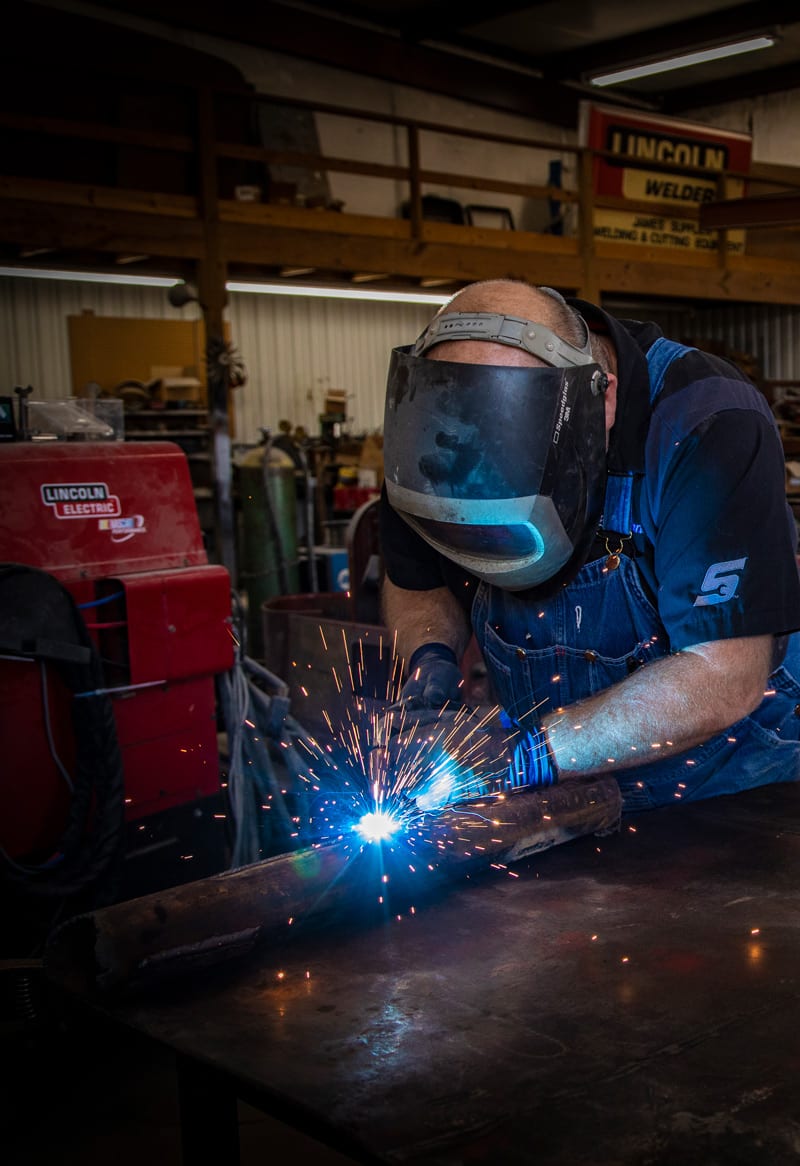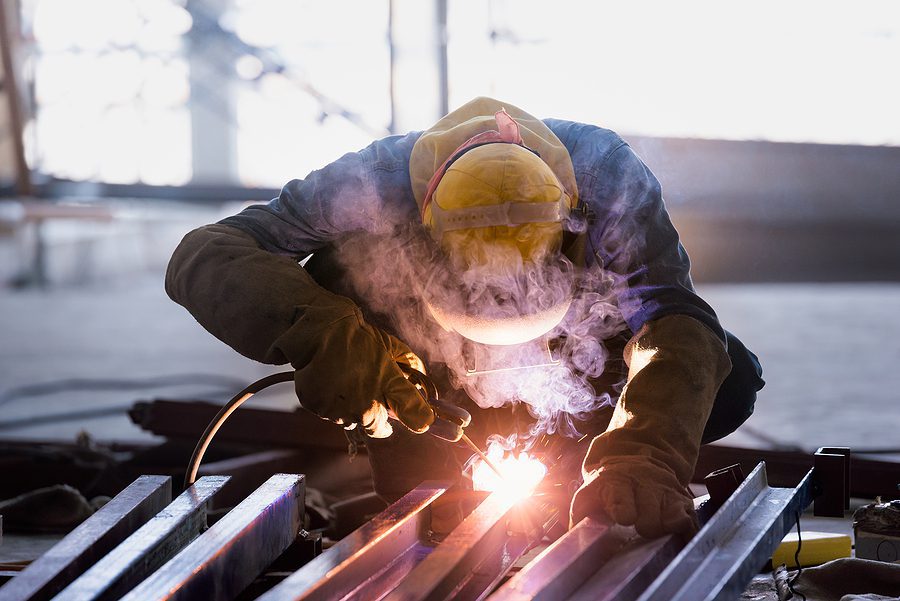All About Welding: Secret Insights Into Techniques and Ideal Practices for Success
Welding encompasses a variety of techniques, each matched for certain products and applications. Understanding these methods, such as GMAW, SMAW, and TIG, is vital for attaining perfect outcomes. In addition, the right equipment and safety and security methods can not be neglected. As prep work and troubleshooting play vital duties in the welding process, understanding these components can considerably improve the quality of the end product. What are the crucial factors that ensure a successful weld?
Comprehending Various Welding Methods
Welding strategies encompass a variety of methods, each suited to certain applications and products. Among the most usual techniques are Gas Steel Arc Welding (GMAW), Secured Steel Arc Welding (SMAW), and Tungsten Inert Gas Welding (TIG) GMAW, likewise called MIG welding, is prominent for its rate and convenience, making it optimal for slim products. SMAW, or stick welding, is preferred for its simplicity and efficiency in outside settings, especially with thicker steels. TIG welding uses precision and control, making it suitable for intricate job and non-ferrous steels (Fabrication). Each method has its special benefits and factors to consider, permitting welders to pick the finest approach based on the project's demands, material type, and wanted results. Understanding these strategies is important for effective welding
Vital Welding Equipment and Tools
While various welding techniques need particular skills, the right equipment and tools are just as important for achieving top quality outcomes. Crucial welding devices includes welding machines, which differ depending upon the method-- such as MIG, TIG, or stick welding. Protective gear, consisting of aprons, headgears, and gloves, warranties security and convenience throughout the procedure. On top of that, fixtures and clamps help secure products in place, ensuring precision in welds. Consumables like welding poles, wire, and shielding gas are also important components that affect the top quality of the weld. In addition, devices such as grinders and cutters facilitate surface prep work and post-weld ending up, contributing to an expert end result. Investing in high-grade equipment eventually boosts the performance and efficiency of welding jobs.
Safety And Security Practices in Welding
Correct safety techniques are crucial in the welding industry to shield workers from prospective risks. Welders have to put on ideal individual safety equipment (PPE), including helmets with proper shading, gloves, and flame-resistant garments. Sufficient air flow is essential to reduce direct exposure to hazardous fumes and gases generated throughout the welding process. Furthermore, employees must be trained in the correct handling of welding tools to stop mishaps. Fire security procedures, such as maintaining combustible products away from the welding area and having fire extinguishers conveniently offered, are needed. Routine assessments of devices and work spaces can help determine possible risks before they result in crashes. By sticking to these security methods, welders can develop a much safer working setting and decrease dangers connected with their profession.
Readying Products for Welding
Preparing materials for welding is an essential action that greatly influences the top quality and integrity of the end product (Montana Mobile Welding and Repair Fabrication). Appropriate preparation involves cleaning the surface areas to eliminate pollutants such as corrosion, dust, and oil, which can jeopardize the weld. Strategies such as grinding, fining sand, or utilizing solvents are commonly employed to achieve a clean surface. Additionally, ensuring that the products fit with each other comfortably is important; spaces can bring about weak welds. It's likewise crucial to take right into account the positioning and positioning of the components, as this will certainly affect the convenience of welding and the final result. Picking the ideal filler material and making sure compatibility with the base metals is vital for achieving solid, sturdy welds.
Tips for Getting High-Quality Welds
Accomplishing premium welds needs focus to information and adherence to best practices throughout the welding procedure. Correct joint prep work is necessary, ensuring surfaces are tidy and complimentary from impurities. Selecting the appropriate filler product and welding technique based on the base metals is crucial for excellent bonding. Preserving consistent traveling speed and angle while welding can promote and protect against problems harmony. Additionally, managing heat input is necessary; too much warmth can cause warping and damaged joints. If necessary, frequently checking the welds during the procedure allows for instant modifications. Lastly, employing appropriate post-weld therapies, such as cleaning and stress and anxiety alleviation, can improve the toughness and honesty of the weld, eventually making certain an effective result.
Troubleshooting Usual Welding Issues
Welding commonly presents obstacles that can impact the quality and integrity of the end product. Typical concerns such as porosity, irregular weld beads, and overheating can occur, each requiring specific repairing techniques. Recognizing these problems is important for welders to improve their skills and attain optimal results.
Porosity Troubles Described
Porosity can commonly be neglected, it continues to be an important concern in welding that can endanger the honesty of a completed item. Porosity refers to the existence of small gas pockets within the weld bead, which can damage the joint and lead to premature failing. This problem normally emerges from contaminants, wetness, or inappropriate cwi welding securing gas coverage throughout the welding procedure. To reduce porosity, welders should verify that the base products are completely dry and tidy, utilize suitable protecting gases, and preserve constant welding parameters. Consistently checking the tools and setting can likewise assist recognize prospective issues before they manifest in the weld. Attending to porosity effectively is important for attaining solid, sturdy welds that fulfill quality standards.

Irregular Weld Beans
Irregular weld beads can substantially influence the high quality and stamina of a completed item. Numerous factors add to this concern, consisting of improper traveling rate, incorrect amperage setups, and inconsistent electrode angles. When the welder moves also quickly, a bead might appear slim and do not have penetration, while relocating too gradually can trigger too much build-up. In addition, making use of the incorrect amperage can cause either undercutting or extreme spatter, both of which compromise weld honesty. The welder's technique, such as irregular lantern activity, can also result in unequal grain appearance. To minimize these problems, welders ought to focus on preserving steady, controlled activities and making sure proper devices setups to accomplish uniformity in their welds. Uniformity is key to attaining strong and dependable welds.
Overheating and Warping Issues
Extreme warmth throughout the welding procedure can cause considerable overheating and buckling problems, impacting the architectural honesty of the workpiece. These issues commonly manifest as distortion, which can compromise placement and fit-up, making more setting up challenging. Aspects adding to overheating consist of the selection of welding criteria, such as voltage and travel speed, as well as the kind of product being welded. To minimize these problems, welders should preserve regular travel rate and suitable heat input while checking the workpiece temperature. Additionally, pre-heating or post-weld warm therapy can assist ease stresses triggered by quick cooling - see this Montana Mobile Welding and Repair Fabrication. Normal inspection and adherence to ideal methods are crucial in protecting against getting too hot and ensuring the long life and integrity of bonded structures
Regularly Asked Questions
What Are the Profession Opportunities in the Welding Sector?
The welding sector supplies diverse profession chances, consisting of settings as welders, inspectors, designers, and teachers. Professionals can work in manufacturing, building, aerospace, and automotive markets, taking advantage of strong need and affordable incomes in numerous roles.
How Can I Boost My Welding Speed Without Sacrificing Top Quality?
To improve welding speed without giving up quality, one must practice efficient strategies, maintain tools, enhance setups, and improve hand-eye coordination. Normal training and seeking comments can additionally greatly add to accomplishing quicker, high-quality welds.
What Certifications Are Available for Welders?
Countless qualifications exist for welders, including those from the American Welding Culture (AWS), the National Center for Construction Education and Study (NCCER), and various industry-specific companies. These credentials enhance employability and show ability proficiency.
How Does Welding Influence the Features of Metals?
Welding influences the homes of metals by changing their microstructure, which can bring about changes in strength, ductility, and hardness. Heat input and air conditioning rates throughout the process greatly impact these product qualities.
Can I Weld Dissimilar Metals With Each Other?
